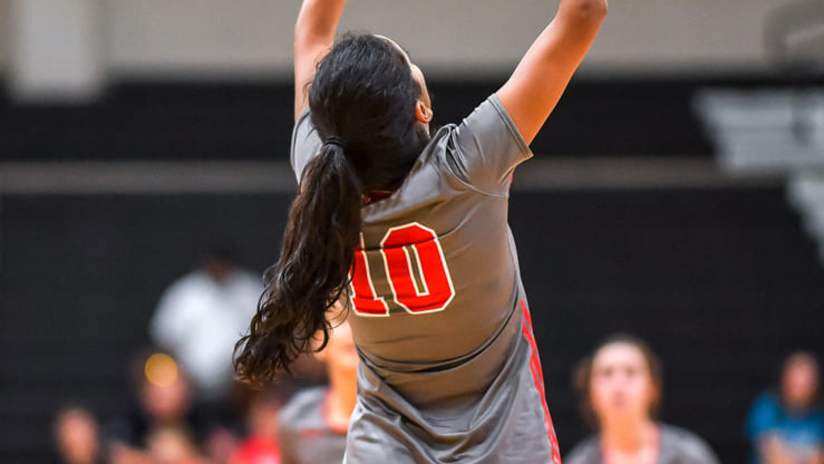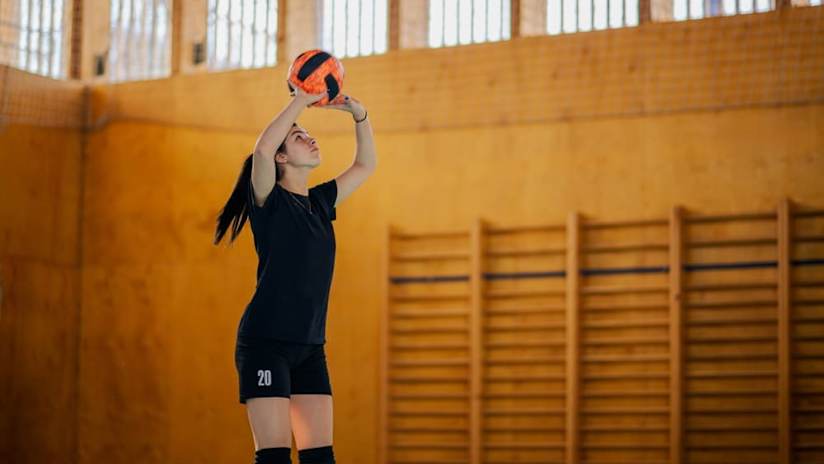What is a Volleyball Set?
A set is one of the basic touches in volleyball, usually the second contact after the ball is passed. The main goal of setting in volleyball is accurately positioning the ball so the hitter can spike it to the opponent's side. A good set not only allows for a powerful attack but also gives the team a greater chance of scoring.
Types of Volleyball Setting
High Set
A high set is one of the most common and traditional forms of volleyball setting. The ball is set high above the net, allowing the hitter ample time to approach, jump, and execute a powerful spike. This allows hitters to choose their angle of attack and increases the likelihood of a successful spike.
Quick Set
The quick set is delivered at a lower height and faster than a high set. The ball is set just above the net, allowing the hitter to jump and hit it almost immediately. Quick sets are effective when the opposing team has a strong block or when the defense needs to be surprised. The speed of the set makes it challenging for the blockers to react in time, which can lead to a successful attack.
Back Set
A back set involves the setter positioning the ball behind their head, often looking away from the net. This type of set can be effective in creating unexpected attack angles. It keeps the opposing blockers guessing and can be particularly beneficial for back-row attackers who can deliver powerful hits without being expected.
Techniques for Perfect Setting
Hand Position
Proper hand positioning is the foundation of a good set. To get this right, form a triangle with your thumbs and index fingers, making a window through which you’ll see the ball. Your fingers should be spread wide, with the pads of your fingers ready to contact the ball.
This triangle shape helps with accuracy and control, ensuring the ball goes exactly where you want it. Don’t forget to keep your hands soft to cushion the ball, avoiding any harsh or jerky movements that can lead to errors.
Footwork
Great footwork is key to setting the ball accurately. Your feet should be shoulder-width apart, with one foot slightly ahead of the other to give you balance. As the ball approaches, step toward it, adjusting your position quickly so that you’re always in the right place.
Ball Contact
Unlike passing or digging, setting requires contacting the ball using only your fingertips. This gives you better control over the ball’s direction. When the ball reaches your hands, gently push it upward with your fingertips. Avoid using your palms, as this can lead to a double contact violation.
Also, remember not to hold onto the ball for too long. The ball should come off your fingers quickly and smoothly, helping your hitter get into position for a powerful attack.
Body Positioning
Body posture is another important element of a volleyball setting. Start by facing the ball and bending your knees slightly to keep yourself grounded. This stance provides stability and allows you to generate more power when needed.
Common Volleyball Setting Mistakes to Avoid
Pushing the Ball
Pushing the ball too hard can lead to inaccurate sets or even penalties for carrying the ball. Focus on using your fingertips and letting the ball flow naturally.
Poor Hand Positioning
If your hands are not positioned correctly, your sets will likely be off-target. Ensure that your fingers form that triangle shape and that you're contacting the ball with your fingertips, not your palms.
Over-Rotating the Body
Another common mistake is over-rotating your body when setting. This can happen if you force the ball in a certain direction. Instead, keep your body stable and let your hands do the work.
How to Improve Your Setting







